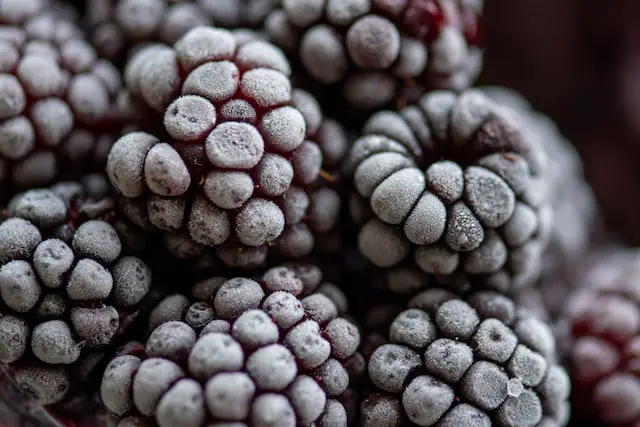
Blackberries are one of those fruits that represent summer to me – especially since I grew up in a warm southern climate (blackberry cobbler, anyone?). But can they be grown in areas with milder summer temperatures and volatile, extreme winter weather?
Blackberries are often thought of as too tender to survive harsh winter conditions. But there are many cultivars that can produce a great harvest, even in very cold areas. It would be a shame for those in the north to miss out on the taste of fresh-picked summer blackberries. So which blackberries grow best in cold climates?
The most cold-hardy blackberry varieties are ‘Illini Hardy’, ‘Chester’, and ‘Darrow’. Some thornless varieties, such as ‘Black Satin’ and ‘Arapaho’ can be very hardy with winter protection. Fall-bearing blackberries will survive harsh winters, but don’t produce well in areas with early frost.
Read on to learn more about the best cold-tolerant blackberry varieties, including information that goes beyond the hardiness zones on the plant tag. As long as you choose the right cultivars and provide some basic winter protection, blackberries can be for cold climates, too.
Growing Blackberries in Cold Climates
What exactly does “cold hardy” mean?
The cold hardiness of a plant is determined by many factors other than just the recommended growing zones. USDA hardiness zones are suggestions based on the average lowest annual temperatures for a given area. So when you see “zone 5” listed on a plant tag, it means that plant can theoretically stay alive in the average cold temperatures of that zone.
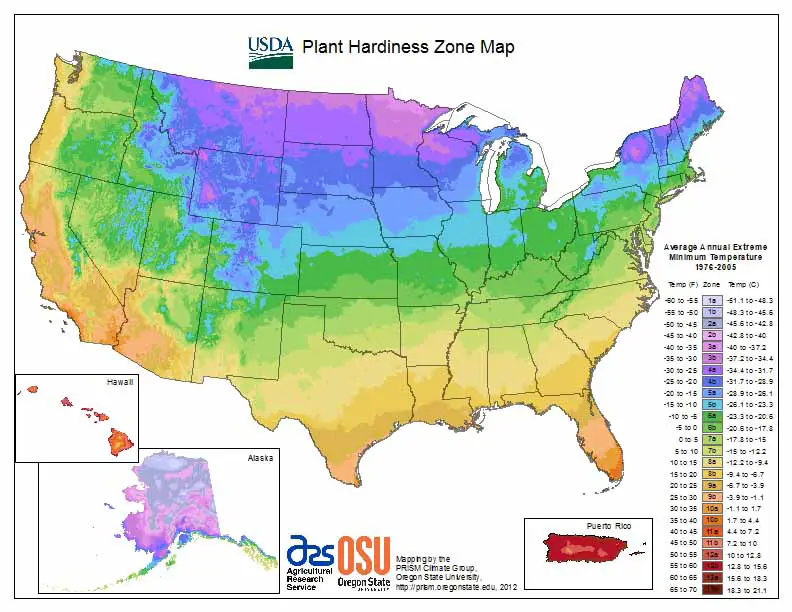
But with blackberries, the zonal rating refers simply to the ability of the crown to survive, not the buds. And, after all, buds are what produce blossoms and fruit. Crown survival is great, but if the plant dies back completely every year it may struggle to ever produce a significant blackberry harvest.
A much more helpful way to determine blackberry hardiness is by simply giving it a go and seeing what does well in your area. The information in this article will give you a starting point for choosing the blackberry varieties that are most likely to not just survive, but actually grow delicious blackberries.
Summer-Bearing vs. Fall-Bearing Blackberries
Most blackberry plants bear fruit in the summer on 2-year-old canes, called floricanes. Each season, the plant blossoms and fruits on canes that started growing the previous year, and begins growing new canes (primocanes) that will produce berries the following year.
Winter hardiness only affects summer-bearing blackberries, because the new primocanes need to survive the winter in order to bud and blossom in the spring.

This isn’t the case for fall-bearing varieties (also called primocane or ever-bearing blackberries). These blackberries produce fruit on first-year primocane growth, rather than on last year’s canes. This means they don’t need to overwinter because the canes grow and fruit in the same season, then can be cut back to the ground before frost.
The problem with growing fall-bearing blackberries in cold climates is that you need a long growing season to actually see a harvest. Some primocane blackberries are listed as being tolerant all the way to zone 3 because the plants can indeed survive those temperatures. But, there is little chance that the blackberries will reach full ripeness by the time winter sets in.
Even though some online resources recommend fall-bearing primocane blackberries because of their cold hardiness, they aren’t suitable to grow in extremely cold climates with a short growing season.
How to Choose Which Variety to Grow
Any time you choose a plant for your garden, it’s a game of weighing different factors. You have to balance the growing conditions, climate, the plant’s needs, and your own goals. In the case of blackberries, you may need to compromise some things if your priority is winter survivability.
For example, are you willing to lose some productivity over really cold winters if it means the berries you get have a far superior flavor? Or would you rather have a consistent, large crop even if the blackberries aren’t as suitable for fresh eating (there’s always preserves, smoothies, baked goods, etc.)?
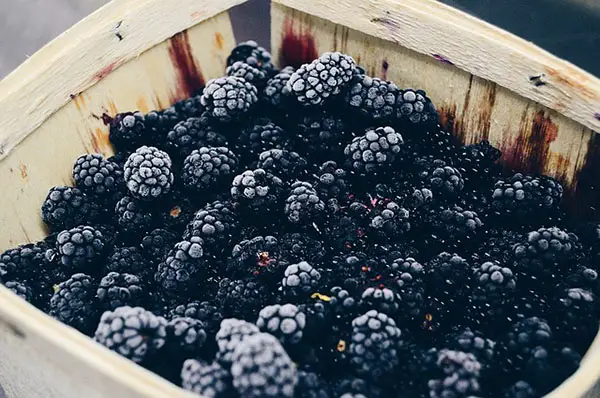
Consider trying to grow a few varieties before deciding which ones are best for expanding your blackberry patch. One of the most reliable ways to choose what varieties to try is to contact your local county extension service. They will have information on which blackberries tend to grow best in your specific area.
Protecting Blackberry Plants in Winter
Regardless of what varieties you choose, there are a few things you can do to help your blackberry plants through the winter. With proper winter protection, you may be able to grow a cultivar that would otherwise not survive extreme low temperatures. As a rule, healthier plants will be more cold-tolerant, so good overall care is essential.
Prune away the old fruiting canes after the blackberry harvest and before frost sets in. As soon as you’ve picked all the berries, the floricanes – the ones that had fruit this season – will die. Pruning away these spent canes will make the plant stronger and hardier.
Select the strongest 4 to 6 remaining primocanes and prune away the rest to the soil line. These are the canes that need to survive the winter in order to grow and fruit the following spring.
For even more details about how and when to prune blackberry plants, see The Best Times to Prune Blackberries (for a HUGE Harvest!).
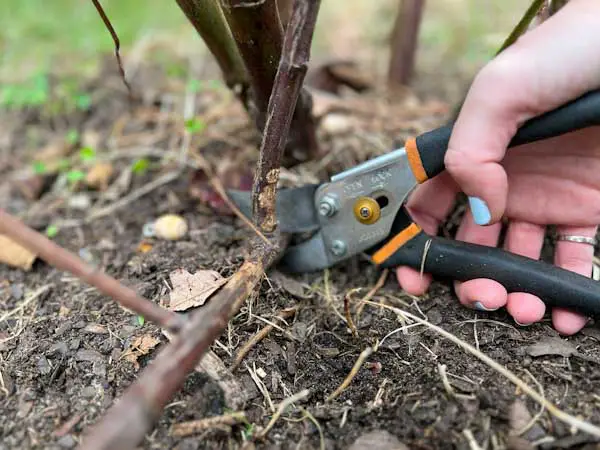
If you are growing a trailing variety, you may be able to push the zonal range north by heavily mulching the plant over the winter:
After fall pruning, take the remaining canes – the ones that did not fruit this year – and carefully detach them from any trellis system. Lay them on the ground and cover them with 3 to 4 inches of mulch, such as a combination of pine bark, leaves, pine needles, or compost. Believe it or not, snow can serve as a good winter mulch, as it will insulate the canes from even colder air temperatures.
As the last frost date approaches in spring, but before the canes have started pushing out new growth, carefully uncover them by moving aside the snow or mulch. Re-tie the canes onto the trellis. They will start growing as soon as the weather warms up enough.
If you are growing an erect variety, select a planting location that has a natural windbreak (or you can construct one yourself). Even if the temperatures aren’t too extreme, strong chilling winds can cause a lot of damage.
Planting near a fence, a brick wall, or taller trees and shrubs might be enough to shield the blackberry plants from some of the harshest winter weather. A south-facing wall or fence will also reflect the sun’s heat, creating a slightly warmer microclimate for your blackberries.
Do you think you might have planted your blackberries in the wrong place? Learn how to move them in my article, Transplanting a Mature Blackberry Bush: Tips to Do It Right.
In the spring, you may need to protect blackberry bushes from late frosts, especially if you notice the plant starting to bud. Wrap the canes using a frost blanket, burlap, or even an old sheet to prevent frost damage.
The Best Cold-Hardy Blackberry Varieties
When it comes to growing blackberries in cold climates, the most important thing is, of course, selecting the right cultivars. In general, the older thorny blackberry varieties tend to be more cold-hardy. But many newer thornless varieties may still provide a decent crop in areas with harsh winters.

If you live in a less extreme climate and want to try growing primocane blackberries that fruit in fall, there are a few good, cold-hardy options. ‘Prime-Ark’, ‘Prime-Jim’, and ‘Prime-Jan’ have good flavor, high yields, and are cold hardy to zone 5 – although frost may hit before all of the berries are ripe. ‘Prime-Jim’ and ‘Prime-Jan’ are very thorny, with ‘Prime-Jim’ producing larger fruit a little earlier than ‘Prime-Jan.’
Below are the summer-bearing blackberry varieties with the best combination of winter survival, productivity, overall quality, flavor, and availability.
1. ‘Illini Hardy’
‘Illini Hardy’ is perhaps the most cold-tolerant blackberry variety. It can be grown in zone 4b (surviving temperatures down to about -25° F), but it may tolerate even colder with proper winter protection. The berries are small and of medium quality, similar to wild blackberries. ‘Illini’ will produce fruit in mid- to late-July and tolerates late frosts well. Erect, very thorny.
2. ‘Chester’
‘Chester’ can be grown confidently in zone 5, but shows good winter survivability in even colder zones (it’s not as hardy as ‘Illini’, though better tasting). ‘Chester’ is also very disease resistant, heat tolerant, and high-yielding. The fruit ripens in late July or early August, and may continue producing fruit until frost in some locations. The small-to-medium berries have good flavor, although they can be somewhat tart. Semi-erect/trailing, thornless.
3. ‘Darrow’
‘Darrow’ is hardy to zone 5, with some success down to -25° F (zone 4b). The berries are large and very productive, with a flavor similar to wild blackberries. ‘Darrow’ is rust-resistant and has a long harvest season. Semi-erect, thorny.
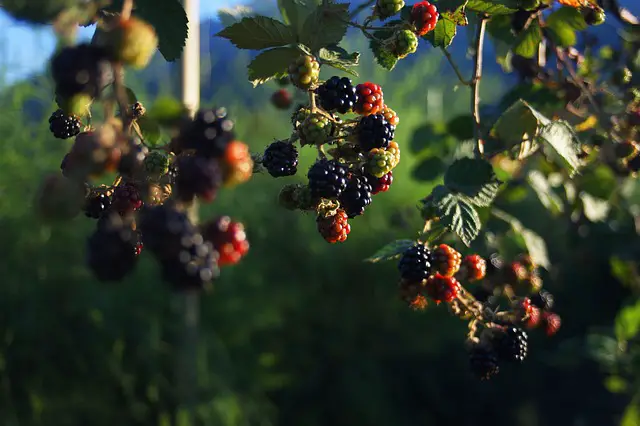
4. ‘Doyle’
‘Doyle’ is definitely suitable for zone 5 and warmer, and has also shown some success in zone 4b. It’s an extremely vigorous producer of small berries with fair flavor. Provide some winter protection with mulch and/or row covers if temperatures reach below -20° F. The fruit ripens in midseason, primarily mid-July to mid-August. Trailing, thornless.
5. ‘Black Satin’
‘Black Satin’ blackberries are generally listed as zone 5, but they may be pushed into zone 4 with winter protection. The plants produce good yields of large, sweet, juicy berries that ripen in midsummer. They are heat-tolerant and disease-resistant. Semi-erect, thornless.
6. ‘Apache’
The ‘Apache’ blackberry grows heavy yields of large, excellent quality fruit. It is the most winter-hardy erect blackberry cultivar (zone 6-9), and may be pushed into zone 5 with winter protection. The sweet berries ripen midseason. ‘Apache’ is generally agreed to be one of the best tasting blackberry varieties. Erect, thornless.
7. ‘Arapaho’
‘Arapaho’ is one of the earliest ripening blackberry cultivars, ripening in June or early July in most locations. It produces large, firm, sweet berries with small seeds and excellent flavor. ‘Arapaho’ is quite winter hardy all the way to zone 5, and is the most high-yielding erect blackberry in colder climates. Erect, thornless.
8. Triple Crown
‘Triple Crown’ is acknowledged as one of the best all-around blackberry cultivars. It is vigorous, very productive, and disease resistant. It grows large, great-tasting blackberries in mid-season. ‘Triple Crown’ may sustain some winter damage in zone 5, but its high yields still make it a great choice to try in cold climates. Semi-erect, thornless.

